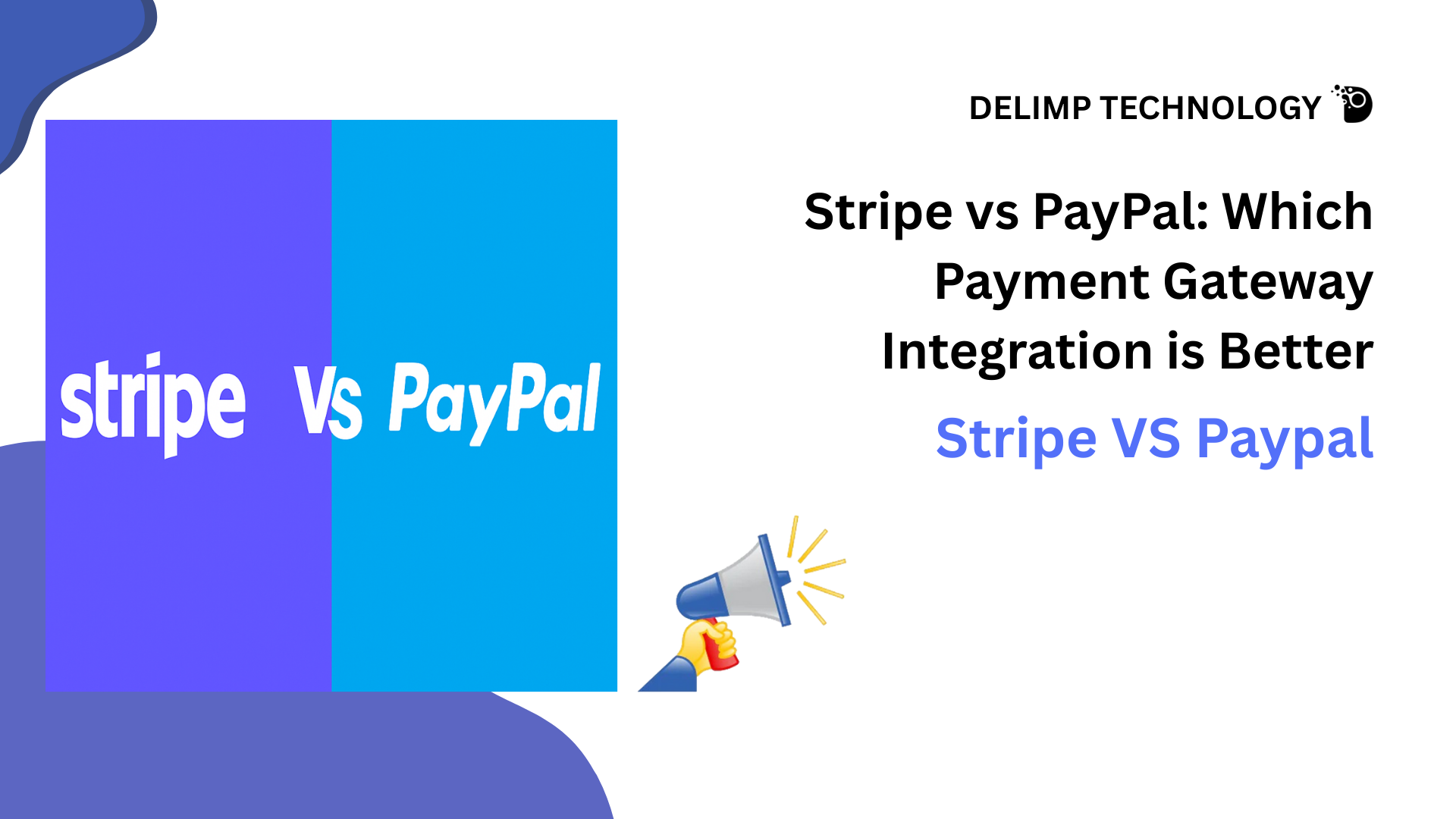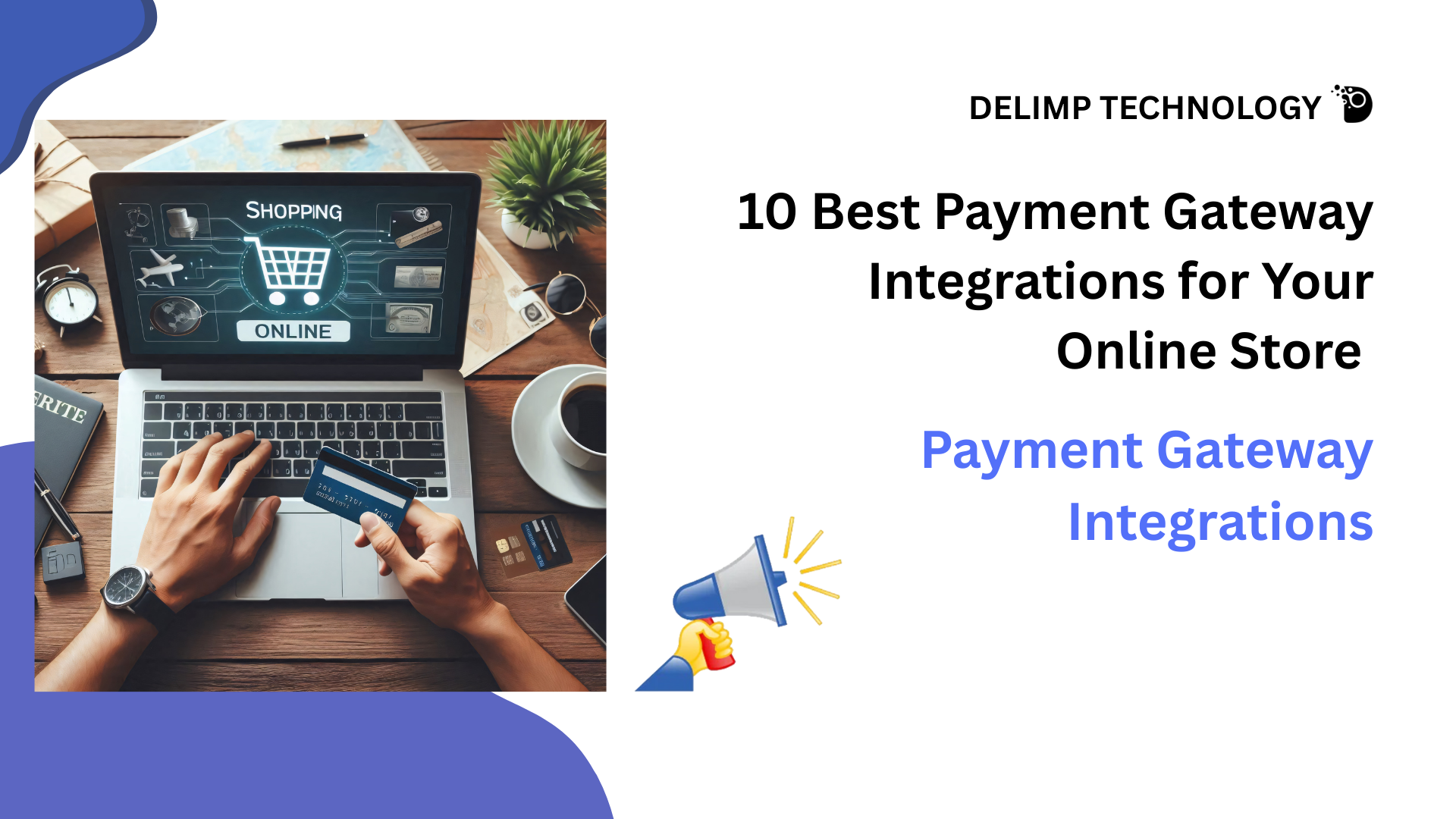When selling online, one question often comes up: Stripe or PayPal? Both are trusted Payment Gateway Integrations used worldwide. They process millions of transactions every day. But the right choice depends on your business needs, customers, and growth plans. If you are looking for the best payment gateway integration services, then Delimp Technology is the best for you. Here’s a clear comparison to help you decide.
1. Ease of Integration
- Stripe is built for developers. Its API lets you create custom checkout pages, manage subscriptions, and design payment flows the way you want. Overall, it is best for customization.
- PayPal is easier for beginners. It comes with simple buttons and ready-made integrations for Shopify, WooCommerce, and WordPress. You can start in minutes, but it’s less flexible. It is best for a quick setup.
2. Supported Payment Methods
- Stripe supports 135+ currencies. It takes Apple Pay, Google Pay, ACH, Klarna, Alipay, and some cryptocurrencies. It is equal to more global payment options
- PayPal is best known for its wallet. Customers can pay using their balance, bank account, or linked cards. In the U.S., it also supports Venmo. It is equal to or stronger than wallet payments.
3. Transaction Fees
- Stripe: 2.9% + 30¢ per card transaction.
- PayPal: 2.9% + 30¢ for U.S. payments, but higher for cross-border and conversions.
Overall, Stripe Payment Gateway is better for international and high-volume businesses.
4. Speed of Payouts
- Stripe: Payouts are made within two business days (the first may take longer). It is steady and predictable.
- PayPal: Instant access to your account. Bank transfers take 1–3 days unless you pay for an instant transfer.PayPal is faster for quick cash.
5. Global Reach and Trust
- PayPal has strong brand power. With 400M+ users, shoppers trust it. This reduces cart abandonment. It fosters greater consumer trust.
- Stripe Businesses trust it in 47+ countries. It supports local methods, making it great for international growth. It is better for global expansion.
6. Security Features
Both are Highly-Secure and PCI DSS Compliant:
- Stripe: Uses Radar, an AI-powered fraud detection system. You can set custom rules. It is equally flexible for developers
- PayPal: Offers fraud filters, buyer protection, and dispute resolution. It is equally strong for buyer protection.
7. Customer Experience
- Stripe: Checkout happens on your site. It feels smooth and professional. It is good for seamless checkout
- PayPal: Redirects customers to its site. Some find this disruptive, but many trust PayPal’s buyer protection. It is good for familiarity and trust.
8. Best Use Cases
| Feature | Stripe | PayPal |
| Best For | SaaS, Subscriptions, Global businesses | Small shops, freelancers, quick payments |
| Integration | Customizable (API-driven) | Plug-and-play, no coding |
| Fees | Lower for global transactions | Higher for cross-border payments |
| Payouts | 2 business days | Instant access |
| Customer Trust | Growing reputation | Very strong |
Final Thoughts:
Both have strengths. Pay-Pal Payment Gateway suits freelancers, small stores, and U.S.-based businesses with its simplicity and trust. Stripe Payment Gateway is ideal for SaaS, subscriptions, and global operations due to its flexibility and scalability. Many organizations combine the two to improve sales, trust, and customer choice.





